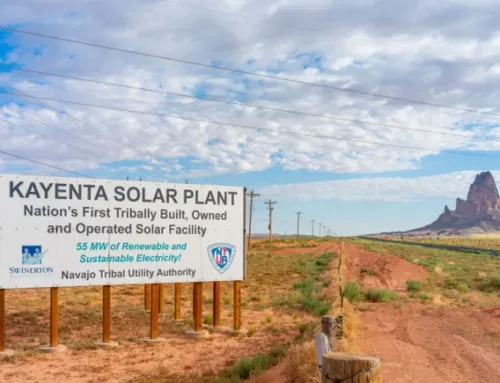Opinion: Clean energy helps Alaska workers and the economy. Congress needs to retain the t
June 16, 2025

I’m proud to represent nearly 200 workers in Alaska as the business manager/secretary-treasurer of the International Union of Painters and Allied Trades (IUPAT) Local 1959, District Council 5. One of the most important parts of my job is finding and securing the best work for the hardworking, incredibly skilled industrial coaters, commercial painters, drywall finishers, glaziers and other workers who make our union proud.
Our members, along with all the workers who power Alaska’s economy, are no stranger to difficult, dangerous jobs. Around a fourth of the workers in the state work in the oil and gas industry, and these workers help fuel the entire country. Alaska is fourth in the nation in crude oil production. There are around 80,000 jobs in the petroleum industry in Alaska, generating more than $5 billion in wages annually. But workers in our state need more opportunities in addition to oil and gas work.
I know that talking about our energy sources is fraught, and it can raise a lot of strong emotions. But the truth is, Alaska’s energy sources — and our entire country’s — are changing, whether we like it or not. Thirty percent of Alaska’s total energy generation came from clean energy in 2024, with hydroelectric power generation accounting for 27% of that. Alaska has one of the highest rates of unemployment in the country and workers here feel the pinch of inflation just like everywhere else.
So why not invest in Alaska’s workers? Workers here should have the opportunity to be part of the green energy boom, and we need to make sure that any green job created is also a good union job. The last administration introduced powerful federal tax credits for homegrown, green energy development — to support good, local jobs for Alaska’s working families on a broad range of energy projects, such as geothermal, nuclear, carbon capture, battery storage, hydropower, solar, and wind projects.
Alaska is not just rich in oil and coal — its beautiful natural resources have the ability to produce an abundance of energy. The coastline has significant wind energy resources, its many rivers offer some of the best hydroelectric power potential in the entire country, and its nearly 150 volcanoes have geothermal energy potential. Currently, Alaska’s per capita total energy consumption is the highest in the nation. But we can enhance a big chunk of this fossil fuel energy with renewables – and we can create good union jobs in the process.
Thanks to the last administration’s tax credits, private companies have announced plans to invest $800 million in new clean energy projects in the state. That doesn’t just mean cleaner forms of energy, it means new jobs. But President Trump’s “One Big Beautiful Bill” would slash those tax credits, and the administration has threatened four clean energy projects in Alaska, jeopardizing over $50 million in clean energy investments, along with countless jobs — including jobs for my members, who have a pivotal role to play in any green infrastructure.
In a world full of extremes, I admire Sen. Murkowski’s ability to meet people in the middle. Keeping these tax credits is the fair thing to do — it’s a no-brainer for the environment, our energy sources, the economy and Alaska’s workers. I hope when the senator reviews the administration’s bill, she sees that.
ADVERTISEMENT
Todd Springer is the business manager/secretary-treasurer of the International Union of Painters and Allied Trades (IUPAT) District Council 5, representing workers in Alaska, Idaho, Oregon, Utah and Washington.
• • •
The views expressed here are the writer’s and are not necessarily endorsed by the Anchorage Daily News, which welcomes a broad range of viewpoints. To submit a piece for consideration, email commentary(at)adn.com. Send submissions shorter than 200 words to letters@adn.com or click here to submit via any web browser. Read our full guidelines for letters and commentaries here.
Search
RECENT PRESS RELEASES
Related Post


